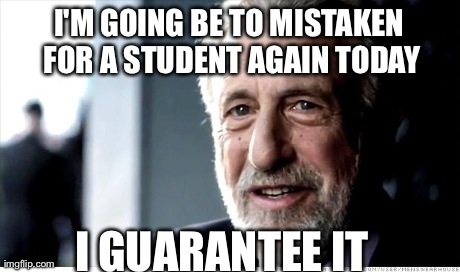Self-Assessment
This week’s post prompt had me perplexed, given that we are to describe our “authentic teaching self,” and I have never formally taught a day in my life. However, after going through this week’s readings, I realized that teaching doesn’t necessarily have to be in a classroom. I’ve helped tutor students, helped run training programs, and consistently try to teach the students I manage at work to have proper workspace etiquette, etc. I thought it would be helpful for myself to write down what I consider some of my biggest personality traits, and try to align them with a “teaching voice”–
- Intuitive- I tend to make decisions based on my instincts, and what I feel is best at the given time. This is normally a mix of what is the most realistic option and what seems the most rational. This personality trait also eliminates time that I could be spending making decisions or dwelling on a decision. Instead, I go with my gut and stick with it. This could help in regards to teaching to a) make quick judgements, b) help others learn to listen to their inner voice, and c) be able to think more creatively. This article provides a really neat perspective on intuition and how it can inform creative decisions.

- Independent- (A nice way of saying introverted.) I very much enjoy my alone time, am not the most outgoing of people, and like to make decisions on my own. I prefer to observe than engage ~but am happy to engage when need be~. Some people are naturally more outgoing and eager to be social, but for introverts like me, its often a very tiring process. As a teacher, this is probably one of the worst personality traits to have. However, I imagine there would be ways to deal with this effectively, such as scheduling one-on-one appointments with students so they could get valuable face-time, and allow them to feel known on a personal level by their teacher. Many students are independent/introverted as well, so this gives them the opportunity to ask the questions they might not otherwise ask in a large classroom setting.
- Personable- I consider myself to be an easily-approachable, personable person. I very much enjoy when someone comes up to me and tells me about themselves, asks me questions, and more. I always do my best to listen to my friends and peers, and make an effort to become engaged in what they are saying. I often ask questions and encourage others to elaborate, which I imagine would be a very effective tool in a classroom. For instance, you could pose an open-ended question to your class, and ask those who answer to elaborate on their yes-no answer. Key features to being personable is to have direct eye contact, minimize distractions like your phone, and have positive body language that reflects theirs. I also think its important to exude positive energy and do your best to make others feel good. I think this personality trait would enable students to approach me and ask questions, feel comfortable that I am engaged in our discussion, and feel positive about the feedback I provide.
- Empathetic- I believe that part of being personable (above) is being empathetic. (Often this is confused with sympathy, i.e. feeling bad for someone. Instead, empathy is putting yourself in someone else’s shoes). This means I care about situations that others are in, good or bad, and try to identify with them. As a professor, this could be both a good and bad trait to have. You would be more willing to listen to a particular situation a student is in, such as why they are not prepared for a test, and possibly accommodate them. However, you could be perceived as a pushover or “too easy” on your students, so I’m not convinced its the best trait to have as an educator (especially in higher ed).
Now that I effectively confused myself on whether or not I have the attributes of an effective educator, I’m going to end here. I’m understanding now that any trait could be both a positive and negative in the teaching world, and it’s important to understand yourself as a person and how you work. Sarah Deel says it well: “I hadn’t considered that certain qualities described me (like my earnestness or attention to detail) could be a legitimate part of my teaching voice. Moreover, I could not construct my teaching voice from other people’s qualities, no matter how much I admired them. My encounter with Parker’s ideas freed me to try to become a teacher true to my own qualities of self.”

